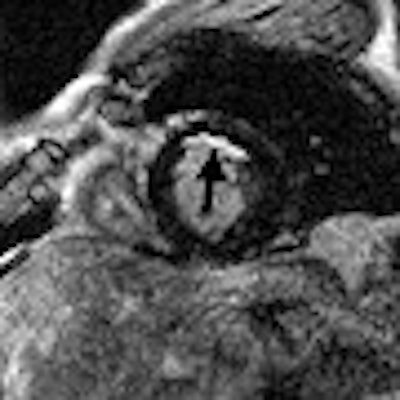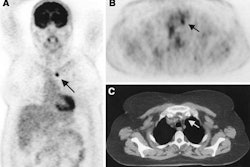
Cardiac MRI has the ability to locate miniscule sites of heart muscle death that go undetected by other imaging techniques, according to researchers from Duke University Medical Center in Durham, NC, and Northwestern University Medical School in Chicago. Known as microinfarcts, such muscle cell death can be an early sign of more severe heart problems to come.
"This study demonstrates that the new MRI technique detects small heart attacks which are missed by existing routine tests such as nuclear perfusion imaging, EKG, and blood tests," said lead author Robert Judd, Ph.D., co-director of the Duke Cardiovascular Magnetic Resonance Center. "Patients with these previously undetected heart attacks will now receive and benefit from proven treatments."
The investigators enrolled 91 subjects with known or suspected coronary artery disease. They found that SPECT detected 53% of the microinfarcts that were found by cardiac MRI. Also, when only SPECT was used, 13% of the subjects with microinfarcts revealed no sign of the event.
"The smaller the infarct, the more likely that SPECT will miss it. And until now, many patients would have been sent home without treatment because the patient and physician were unaware of the heart attack," Judd said.
MR exams were performed on a 1.5-tesla Sonata scanner (Siemens Medical Solutions USA, Malvern, PA) using pulse sequence-segmented inversion-recovery FLASH. A contrast agent was administered intravenously at 0.15 mmol/kg (ProHance, Bracco Diagnostics, Princeton, NJ). For SPECT testing, a standard stress-rest dual isotope scan was performed (The Lancet, February 1, 2003, Vol. 361:9355, pp. 374-379).
The investigators also performed the same imaging protocol on animals with and without known heart disease.
 |
| Heart attack detected by cardiac MRI (in bright region indicated by arrow). Image courtesy of Robert Judd, Ph.D. |
"In the animals, cardiac MRI and SPECT detected infarcts involving greater than 75% of the chamber wall," Judd said. "However, for infarcts involving less than 50% of the chamber wall, cardiac MRI detected 92%, while SPECT detected only 28%."
Judd said more research is needed to establish the role of cardiac MRI in the diagnosis of heart disease. Other cardiac specialists called the results promising, pointing out that cardiac MRI may be the ideal imaging tool for patients who would benefit from secondary prevention measures following a heart attack.
"The researchers have shown that older techniques, such as SPECT, for detecting small heart attacks are inaccurate because of their poor resolution," commented Dr. Dudley Pennell, professor of cardiology, Royal Brompton Hospital in London. "This is important because many patients present to hospitals with chest pain, and the diagnosis can be missed. CMR allows the confident diagnosis of heart attack at any time after the actual event, and is exquisitely sensitive. In patients with small heart attacks which would otherwise go unnoticed, they can now be offered appropriate secondary prevention measures to prevent them having further heart attacks in the future which might be larger and potentially more dangerous. In addition, getting the diagnosis right the first time saves patient anxiety over an unknown diagnosis, and prevents unnecessary tests for noncardiac causes of chest pain."
By Bruce SylvesterAuntMinnie.com contributing writer
February 14, 2003
Related Reading
Cardiac MRI may improve triage of patients with chest pain, February 4, 2003
MRA may make invasive angiography obsolete, January 21, 2003
Stress test with SPECT remains main modality for assessing myocardial viability, November 8, 2002
Along with SPECT, PET and MRI find niche in myocardial assessment, October 21, 2002
Copyright © 2003 AuntMinnie.com



















